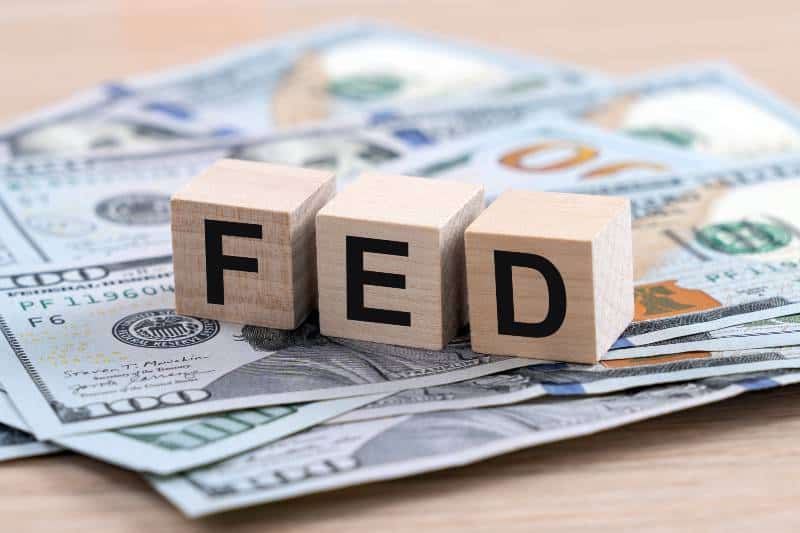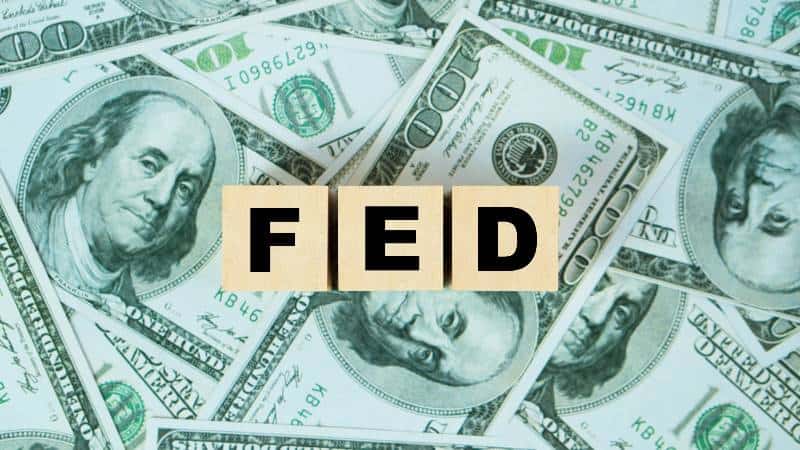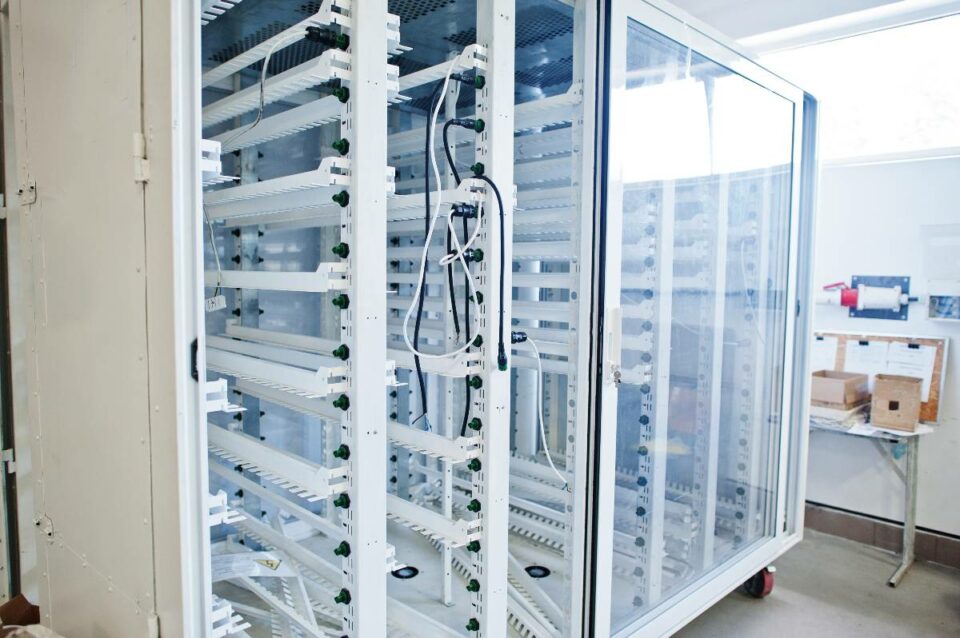Are you looking to invest in the commercial real estate industry but concerned about how unfavorable interest rates may affect your purchase decision? If so, don’t worry – you’re not alone! Many first-time investors worry that the current high-interest environment will increase their borrowing costs and make it difficult for them to get into real estate.
In this blog post, we’ll take a look at the different ways that interest rate fluctuations can impact commercial real estate deals. We’ll explore what causes these changes as well as what strategies investors can use to reduce their risk and maximize returns on investments made during times of higher financing costs. So whether you’re an experienced or novice investor, the information here should be invaluable and help inform your decisions when purchasing property in a competitive high-interest market.
New real estate development is facing more pressure due to the higher cost of debt. This is because it’s difficult to find financing sources that fit within a project’s capital stack. Additionally, building valuations across commercial sectors are being compressed.
Key Takeaways
- When interest rates go up, it becomes more expensive to borrow money. As a result, people may not want to buy real estate as much, which can cause property values to drop. This can impact how people decide to invest in commercial real estate, including industrial properties.
- Interest rates, when higher, can raise the borrowing costs for both potential homebuyers and current property owners. Consequently, this may lead to reduced occupancy rates and modifications in lease rates since businesses may exhibit reluctance to grow and property owners may seek to transfer these increased expenses to renters.
- To deal with increasing interest rates, various methods can be used such as spreading out investment across different areas, exploring fixed-rate loan options, prioritizing properties with extended lease agreements, and discussing lease terms.

The Basics of Interest Rates
Explanation of how interest rates work
Interest rates reveal how expensive it is to borrow or the potential rewards for saving, allowing individuals to weigh the pros and cons of different financial options.
When you borrow money, you’re charged interest, which is essentially a fee for borrowing. This fee is calculated as a percentage of the total amount borrowed and is added to the overall cost of the loan. The interest rate can vary depending on your credit score, the length of the loan, and the lender’s policies. It’s important to pay attention to the interest rate when taking out a loan as a higher rate can mean paying back a lot more money in the long run, even for a loan of the same size.
If you’re someone who values saving money, then knowing the savings rate can help you plan for the future. The savings rate is essentially the percentage of your savings that will be paid into your account, based on the amount you’re depositing. By choosing a savings account with a higher rate, you guarantee that more money will be deposited into your account over time, which can add up to significant savings down the line. Plus, when you’re able to maximize your savings in this way, you’ll have peace of mind knowing that you’re financially secure and prepared for whatever comes your way.
Even the slightest shift in interest rates can trigger a significant impact. Therefore, it’s crucial to closely monitor fluctuations – whether they are rising, falling, or remaining unchanged – to stay informed.
What are Interest Rates?
Interest rates are essentially the cost of borrowing money. In the context of commercial real estate, when you borrow money to purchase a property, the lender—usually a bank or other financial institution—will charge you an interest rate on the loan. This interest is the profit that the lender receives for providing the loan.
Determining Interest Rates
What factors determine interest rate magnitude in an economy? Here are some of the most critical considerations.
The strength of an economy is closely linked to the savings rate of its people.
Interest rates are set by the free market’s intertwining of supply and demand. The appetite for funds is led by businesses, governments, and households that seek to spend more than they generate. The pool of available funds is shaped by consumers, businesses, and governments who save.
In times of rapid economic growth, businesses invest more in plants and equipment and individuals invest more in housing, causing interest rates to rise. Conversely, periods marked by weak economic conditions result in reduced business and housing investment, leading to declining interest rates. The country’s central bank, in the United States the Federal Reserve, often implements policies to decrease interest rates and stimulate interest-sensitive investments such as housing.
The inflation rate.
The decision to lend money to someone can be influenced by inflation rates. If prices are projected to remain steady, I may be content to lend money for a year at 4 percent interest because I anticipate having 4 percent more buying power when the loan comes due. However, if the inflation rate is projected to reach 10 percent, the situation changes.
If everything else is equal, I’ll require a 14% interest rate. Ten percent of this compensates for inflation, as noted by economist Irving Fisher nearly a century ago. It’s crucial to distinguish between the real (4%) and nominal (14%) interest rates. Nominal equals the real rate plus the expected inflation rate.
The time period of the loan.
Typically, lenders charge a higher interest rate for loans that mature over an extended period. Consequently, a ten-year loan bears a higher interest rate compared to a one-year loan. Similarly, a three-year bank certificate of deposit has a higher yield than a six-month certificate of deposit. However, this general rule is not always rigid, and to comprehend why, one must get a grasp on bond investment basics.
Fixed vs. Variable Interest Rates
Commercial real estate loans can have either a fixed or variable interest rate. A fixed-rate loan means the interest rate stays the same for the entire duration of the loan. On the other hand, a variable or adjustable-rate loan means that the interest rate can change over time, typically in relation to an index rate.
Impact of Interest Rates on Commercial Real Estate
Changes in interest rates can significantly impact the commercial real estate market. When interest rates rise, the cost of borrowing increases. This can lead to a decrease in real estate purchases, which can in turn lead to lower property prices. On the other hand, when interest rates decrease, borrowing becomes cheaper, potentially stimulating more demand for properties and driving up prices.
Also, interest rates can impact the return on investment for real estate investors. If an investor is relying on a loan to finance a property purchase, a higher interest rate will increase the investor’s costs and can reduce the potential ROI. Conversely, a lower interest rate can increase the potential ROI by reducing the investor’s costs.
In conclusion, interest rates are a critical element in the commercial real estate landscape, affecting everything from the cost of loans to the potential return on investment. By understanding how they work, one can make more informed decisions about property financing and investment strategies.
The role of Central Banks in setting interest rates
The Federal Reserve, also known as the Fed, is responsible for maintaining stability in the financial system of the United States. They have certain tools to make changes to the monetary policies that support the government’s fiscal policy.
The Federal Reserve’s responsibilities include managing the production and distribution of the country’s money, providing information and statistics to the public, and implementing changes to the discount rate to encourage economic and employment growth.
The central bank’s ability to increase or decrease the discount rate is the most significant economic tool it has. Changes to this crucial interest rate have a profound impact on fundamental macroeconomic elements, such as consumer spending and borrowing.
Central banks play a crucial role in setting interest rates, which can influence borrowing costs, economic growth, inflation, and unemployment rates. Let’s break down how this works.
Monetary Policy
Central banks implement what’s known as monetary policy, which involves managing the supply of money and interest rates in an economy to achieve specific economic objectives. These objectives often include controlling inflation, managing unemployment, and promoting economic growth.
Setting the Policy Rate
One of the key tools central banks use in monetary policy is the manipulation of the policy rate, also known as the key interest rate. In the U.S., for instance, this is called the federal funds rate. This rate is what banks charge each other for overnight loans. Central banks adjust this rate to influence broader interest rates in the economy.
Influence on Other Interest Rates
When the central bank changes the policy rate, it has a domino effect on all sorts of other interest rates in the economy. Here’s how:
- If the central bank lowers the policy rate, banks and other financial institutions generally lower their interest rates as well. This makes borrowing cheaper, which can stimulate economic activity by encouraging businesses and individuals to take out loans for things like capital investment, home purchases, or consumer spending.
- If the central bank raises the policy rate, borrowing becomes more expensive as banks and other financial institutions increase their interest rates. This can slow economic activity by discouraging borrowing and encouraging saving.
Open Market Operations
Apart from setting the policy rate, central banks also conduct open market operations, which involve buying and selling government securities (like treasury bonds). By doing so, they can influence the amount of money circulating in the economy, which also impacts interest rates.
- If a central bank wants to lower interest rates, it can buy government securities. This increases the money supply because the central bank is effectively injecting cash into the economy in exchange for these securities. An increased money supply tends to lower interest rates because there is more money available to lend.
- Conversely, if a central bank wants to raise interest rates, it can sell government securities. This reduces the money supply because the central bank is effectively taking cash out of the economy in exchange for these securities. A reduced money supply tends to raise interest rates because there is less money available to lend.
Central banks play a crucial role in steering interest rates and managing economic conditions. They employ monetary policy tools like policy rates and open market operations to influence borrowing costs and the pace of economic activity. Their purpose is to chart a course for a nation’s economy toward prosperity.
The historical context of interest rates
Interest rates have a rich history that spans thousands of years and countless economies. Here is an overview of the historical context of interest rates.
Ancient History
The concept of interest dates back to ancient civilizations. In Mesopotamia, for instance, merchants loaned grain to farmers and traders with the expectation of receiving more grain in return. These early interest rates were high—typically around 20%—to account for the risk of the loan and the opportunity cost of lending grain that could have been sold immediately.
Middle Ages
During the Middle Ages in Europe, the Church held significant influence over economic activities, and it generally condemned the practice of charging interest, labeling it as usury. However, there were still some forms of credit and lending during this time, often facilitated by Jewish and Lombard moneylenders who were not bound by the Church’s restrictions.
Renaissance to Industrial Revolution
As commerce expanded during the Renaissance and through the Industrial Revolution, the need for loans to finance ventures grew, and so did the acceptance of charging interest. The emerging capitalist economies, the establishment of central banking systems, and the development of modern financial markets during this time led to the gradual standardization and regulation of interest rates.
20th Century to Present
In the 20th century, interest rates became a primary tool of monetary policy, used by central banks to manage inflation and stabilize economies. In the U.S., the Federal Reserve was established in 1913 and has since used interest rates to balance economic growth and inflation.
The period after the Great Depression and World War II saw relatively stable and low-interest rates, promoting economic growth. However, the late 1970s and early 1980s experienced a period of exceptionally high-interest rates as central banks, particularly the Federal Reserve under Chairman Paul Volcker, aggressively raised rates to combat rampant inflation.
In recent decades, particularly following the 2008 financial crisis and during the COVID-19 pandemic, central banks around the world have maintained historically low-interest rates to stimulate economic recovery. This prolonged period of low interest rates has been a notable feature of the global economy in the 21st century.
To sum up, the history of interest rates is closely connected to the overall history of economies and societies. As economic conditions, societal attitudes, and policy priorities have shifted over time, interest rates have also changed and adapted.
Rising Interest Rates: A Broad Overview
Interest rates are affected by a range of factors and play a significant role in the health of a country’s economy. They’ve varied greatly over the years, influenced by central bank policy, inflation, economic growth, and international factors.
Trends Over the Years
In the past few decades, interest rates have generally been on a downward trend. In the 1980s, many developed economies, including the U.S., experienced relatively high-interest rates as central banks sought to combat high inflation.
However, starting from the mid-1980s, interest rates have generally decreased. This downward trend has been particularly pronounced since the 2008 financial crisis, as central banks around the world cut interest rates to historically low levels in an attempt to stimulate economic recovery.
Reasons Behind Rising Interest Rates
Typical reasons why central banks might raise interest rates:
- Inflation Control: Central banks raise interest rates to keep inflation at a target level. When the economy is overheating and prices are rising too quickly, higher interest rates can help cool the economy down. By making borrowing more expensive, it slows down the amount of spending and investment, which can help to bring inflation under control.
- Economic Growth: If the economy is growing robustly, central banks might raise interest rates to prevent it from overheating. This is because too-fast economic growth can lead to economic instability, causing boom-and-bust cycles.
- Currency Stability: Higher interest rates can attract foreign investors looking for better returns on their investments, which can strengthen the country’s currency. If a country’s currency is depreciating too rapidly, raising interest rates can help stabilize it.
- Financial Stability: Sometimes, interest rates might be increased to ensure financial stability. For example, if there’s a concern about a potential asset bubble (such as in the housing market), higher interest rates can make borrowing more expensive and discourage excessive risk-taking.
Remember that the decision to raise interest rates involves trade-offs. For example, while higher interest rates can help control inflation, they also make borrowing more expensive for businesses and consumers, which can slow economic growth. Central banks have to balance these considerations when setting monetary policy.
How Rising Interest Rates Impact Industrial Commercial Real Estate
Rising interest rates can have several effects on industrial commercial real estate, impacting property values, borrowing costs, investment decisions, lease rates, and occupancy levels.
1. Impact on Property Values:
Rising interest rates can affect property values, often inversely. As interest rates rise, the cost of borrowing increases, which can decrease the demand for real estate. This can put downward pressure on property values. Additionally, commercial real estate often involves an income approach to value, where the value of the property is based on the income it generates. Higher interest rates can increase the capitalization rate used in this calculation, reducing the property’s value.
2. Impact on Borrowing Costs and Investment Decisions:
Higher interest rates mean higher borrowing costs. For potential property buyers, this means that the cost of financing the purchase of a property will increase. This might discourage some investors from buying properties or make it harder for them to generate a good return on their investment.
For existing property owners with variable-rate mortgages, their debt service payments may rise as interest rates increase. This could put financial pressure on property owners, especially if they are already operating on thin margins.
3. Influence on Lease Rates and Occupancy Levels:
Higher interest rates can indirectly affect lease rates and occupancy levels. When the cost of borrowing increases, businesses may be more reluctant to expand, which could reduce demand for industrial spaces and lead to lower lease rates.
On the flip side, if property owners are facing higher borrowing costs, they may try to pass on some of these costs to tenants by increasing lease rates. However, their ability to do so will depend on the state of the market—if there is a lot of competition or demand is low, it might be hard to raise lease rates.
Similarly, if businesses are cutting back on expansion due to higher borrowing costs, they might require less space, potentially leading to lower occupancy levels for industrial properties.
As it turns out, interest rate hikes can have quite an effect on commercial real estate properties. Their values, investment decisions, lease rates, and occupancy levels are all susceptible to change. But, to what extent do these changes occur? It ultimately depends on a number of factors, including the property, the state of the local and national economies, and the financial position of any involved businesses.
Pro-tip: To discover more, take a look at my article “Thriving in Tough Times: Recession-Proof Real Estate Investing,” where I dive into the intricacies of overcoming economic downturns and building successful real estate investments.
Case Studies
I’d love to give you a high-level understanding of how variations in interest rates affect the property market, particularly in the industrial and commercial realms. Here are a few key aspects to consider:
1. The Volcker Shock (Late 1970s to Early 1980s):
In the U.S., one of the most famous instances of interest rates affecting the real estate market came during the late 1970s and early 1980s under Federal Reserve Chairman Paul Volcker. In an effort to combat persistently high inflation, the Federal Reserve drastically increased interest rates, with the federal funds rate peaking at about 20% in 1981.
This made borrowing more expensive, leading to a decrease in real estate demand and a subsequent decline in property values. For commercial real estate, including industrial properties, this meant higher capitalization rates and lower property values. The period of high-interest rates contributed to a severe recession, but it was successful in bringing down inflation.
2. The Global Financial Crisis and Its Aftermath (2008 onwards):
In contrast, during the Global Financial Crisis in 2008, the Federal Reserve and other central banks worldwide slashed interest rates to historically low levels to stimulate economic activity.
The low-interest rates reduced borrowing costs, eventually leading to a recovery in the real estate market, including industrial properties, as investors sought higher yields in real assets.
As the economy started to recover, there were periods when fears of rising interest rates caused jitters in the real estate market. For instance, during the so-called “Taper Tantrum” in 2013, when the Federal Reserve announced plans to slow down its bond-buying program (indicating that higher interest rates could be on the horizon), there were temporary disruptions in the real estate market.
Remember, the impact of interest rate changes can vary widely depending on numerous factors, such as the state of the economy, market expectations about future interest rates, the rate at which changes are implemented, and the specific conditions of the commercial real estate market.
Coping Strategies for Rising Interest Rates
For Investors:
- Diversify Your Portfolio: Diversification can help mitigate risks associated with rising interest rates. Investors can spread their capital across different types of real estate investments, including different sectors and geographic locations.
- Consider Fixed-Rate Loans: If interest rates are expected to rise, locking in a fixed-rate loan can protect against future increases in borrowing costs. However, these often come with higher initial interest rates than variable-rate loans.
- Focus on Properties with Long-Term Leases: Properties with long-term leases in place can provide more stable income streams that are less sensitive to interest rate changes.
- Pay Down Debt: If feasible, paying down debt can reduce exposure to rising interest rates, particularly for variable-rate loans.
For Tenants:
- Negotiate Lease Terms: Tenants might be able to negotiate lease terms that provide some protection against rising costs, such as caps on rent increases or options to renew at a fixed rate.
- Plan for Possible Increases: Tenants can also plan for the possibility of rising rents by building a cushion into their budget or looking for ways to reduce other costs.
For Owners:
- Refinance Debt: If interest rates are rising but still relatively low, it might be a good time to refinance existing debt at a fixed rate.
- Improve Property Efficiency: Owners can look for ways to increase the income generated by their properties, such as by making improvements that allow for higher rents, reducing vacancies, or finding additional revenue streams (like advertising or fees for amenities).
- Review and Adjust Business Plan: Review your business plan in the context of the higher interest rate environment. You might need to adjust your expectations for property income or value growth.
Remember, these are general strategies and may not be appropriate for everyone. The best approach depends on many factors, including an individual’s or company’s financial situation, the specifics of the property, and the overall state of the economy and real estate market. It’s always a good idea to consult with a financial advisor or real estate professional when making significant financial decisions.
Predictions and Expectations
it’s difficult to predict the exact impact of sustained higher interest rates on the industrial commercial real estate market because many factors can influence outcomes. However, several potential effects can be anticipated based on economic theory and historical patterns:
1. Decreased Property Values: As interest rates rise, borrowing costs increase. This can decrease demand for real estate and put downward pressure on property values. Additionally, higher interest rates can lead to higher capitalization rates, which could also decrease property values in an income approach to value.
2. Increased Borrowing Costs: Higher interest rates mean higher borrowing costs. This could potentially slow down investment in commercial real estate as the cost of capital becomes more expensive. It may also affect the feasibility of new development projects, which often rely on borrowed money.
3. Changes in Lease Rates and Occupancy Levels: Higher borrowing costs might make businesses more hesitant to expand, potentially reducing demand for industrial space and leading to lower lease rates and occupancy levels. Alternatively, property owners facing higher costs may attempt to pass these on to tenants by raising lease rates.
4. Shifts in Investment Strategies: If interest rates are expected to remain high for a sustained period, investors might shift their strategies. For example, they might seek out properties with long-term leases in place that provide stable income streams. They may also favor sectors or markets that are less sensitive to interest rate changes.
As for expert opinions and predictions, they would vary widely depending on the time and specific circumstances. Some experts might believe that rising interest rates would significantly impact the industrial real estate market, while others might believe that strong fundamentals in that sector (such as demand driven by e-commerce growth) could mitigate the effects of higher rates. It’s always a good idea to seek up-to-date, personalized advice from financial and real estate professionals when making investment decisions.
Please note, these are general insights and actual market outcomes can differ based on a wide array of factors.

How High-Interest Rates Affect Commercial Real Estate FAQs
How do rising interest rates impact property values?
Real estate values decrease when the returns on competing or substitute investments increase, but they increase when interest rates decrease.
What effect do rising interest rates have on borrowing costs in real estate?
The housing market tends to slow down when interest rates are higher or increasing. This is because higher interest rates increase the cost of owning a home, which leads to a decrease in demand. As demand falls, home prices also tend to drop.
How can rising interest rates influence lease rates and occupancy levels?
The impact of interest rates on property prices can be analyzed through the income approach, which considers the net cash flow, similar to how equity and bond investments are analyzed using discounted cash flow analysis.
What strategies can help mitigate the effects of rising interest rates?
To protect yourself from the risk of interest rate fluctuations, you can either bet on a bond future increasing in value or an interest rate future decreasing in value. Another option is to create a diversified portfolio of bonds and equities. To guard against inflation, diversify your bond holdings using CFDs.
What are some predictions for the future impact of rising interest rates on industrial commercial real estate?
It may take some time, but the industry could weaken if demand for commercial real estate falls due to rising interest rates. This could result in lower property values, higher vacancy rates, and increased rates of default.
Conclusion
Investing in commercial real estate may not be as appealing during times of rising interest rates. However, it’s important to not let the fear of increased borrowing costs stop you from expanding your operations and pursuing investment opportunities.
When you take that leap and invest in commercial real estate, you can reap many benefits, such as passive income generation, asset classes and diversification, and enhanced commercial success. Seeking advice from an experienced professional can help you get started on the right foot toward a profitable venture.
If you’d like to learn more or explore some of these opportunities further, please don’t hesitate to call or schedule a free consultation. With some dedication and expertise on your side, there are plenty of profitable avenues through which to navigate an uncertain real estate market!




